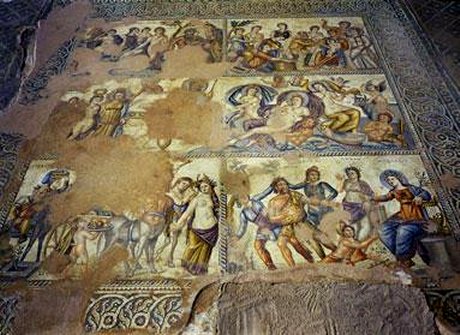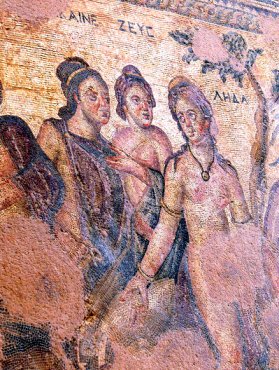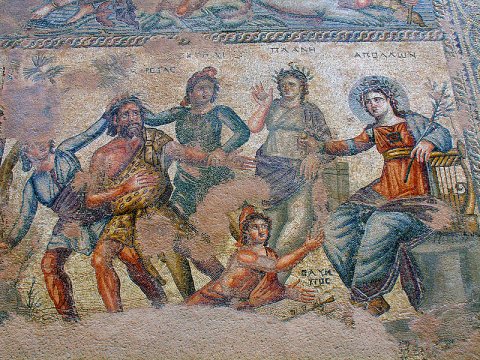The mosaic image we have been looking at forms part of a sequence of five mythological tales. Reading from the top left, they show Leda, the Dionysus childhood image, Cassiopeia and the Nereids (the full length centre image) the triumph of Dionysus (lower left) and Apollo and Marsyas (lower right). It has been suggested that four of the five images have a Christian reference. The centre image has not. It depicts Cassiopeia claiming that she and her daughter Andromeda were far more beautiful than those Nereids (sea nymphs). Poseidon was not pleased, and it did not turn out well for Andromeda.
Lets have a look at these other panels.



What is left of this panel shows the Triumph of Dionysus. Dionysus rides in victory parade following his exploits in India. This is a popular image on Roman sarcophagi. It has been suggested that it can be linked with the entry of Christ into Jerusalem, but this is not entirely convincing.

Conclusion? The image of the young Dionysus does chime with the story of the Magi: the others are less convincing. However, it is well worth considering the broader context, particularly the religious division and debate in fifth century Cyprus.
I would recommend this paper for further reading: 'Christians and Pagans in Roman Nea Paphos: Contextualizing the ‘House of Aion’ Mosaic' by John Ladouceur.
It is available on the internet here: https://cloudfront.escholarship.org/dist/prd/content/qt4hb1v94d/qt4hb1v94d.pdf?t=pi3mht&nosplash=c4c5a8d850b81c85a19645568df2671f
Home page: explore the site